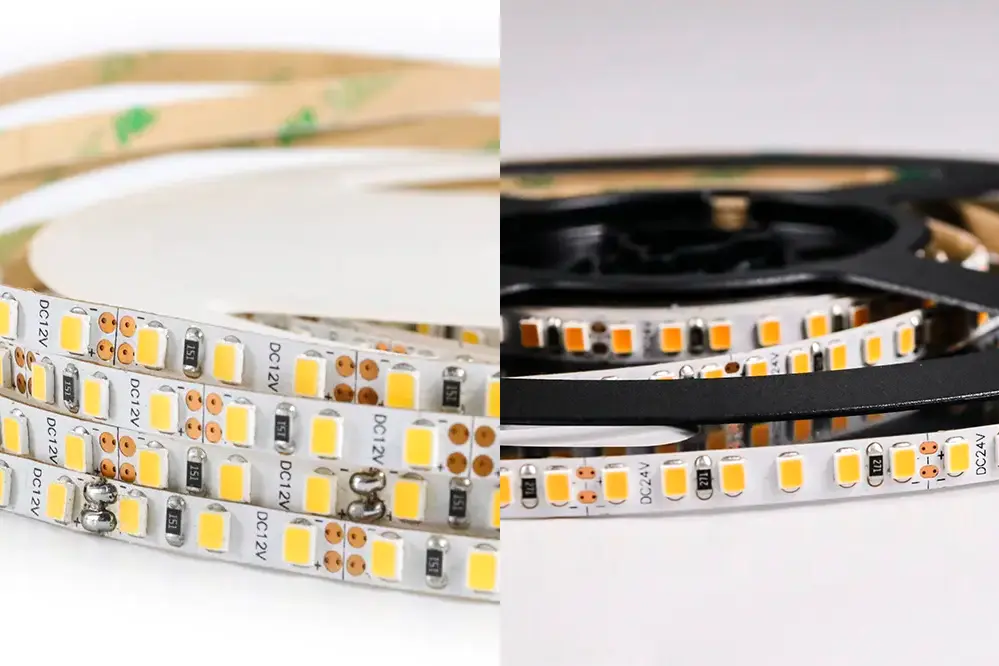LED strips are a popular choice for adding ambient lighting, accent lighting, and even task lighting to various spaces. When choosing an LED strip, one important factor to consider is the voltage. In this guide, we’ll explore the differences between 12V and 24V LED strips to help you decide which one is best for your needs.
Key Takeaways
• Voltage matters: 12V and 24V LED strips have distinct advantages and applications.
• Installation varies: 24V LED strips can often handle longer runs without voltage drop issues.
• Cost efficiency: Consider both initial cost and long-term energy savings.
Introduction to LED Strips
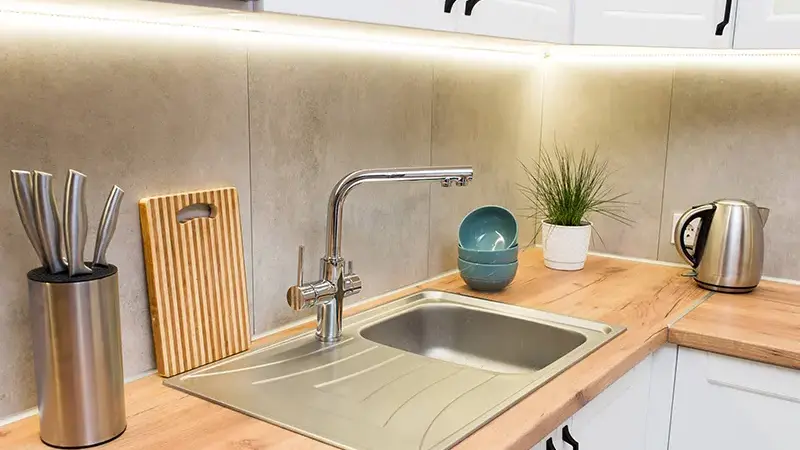
LED strips, also known as LED tape lights, are flexible circuit boards embedded with LEDs. These strips can be easily installed in various settings to provide a range of lighting effects. They have become increasingly popular due to their versatility, energy efficiency, and long lifespan.
Choosing the right voltage for your LED strip is crucial. The two most common options are 12V and 24V. Understanding the differences between these two can help you make an informed decision.
Basics of 12V LED Strips
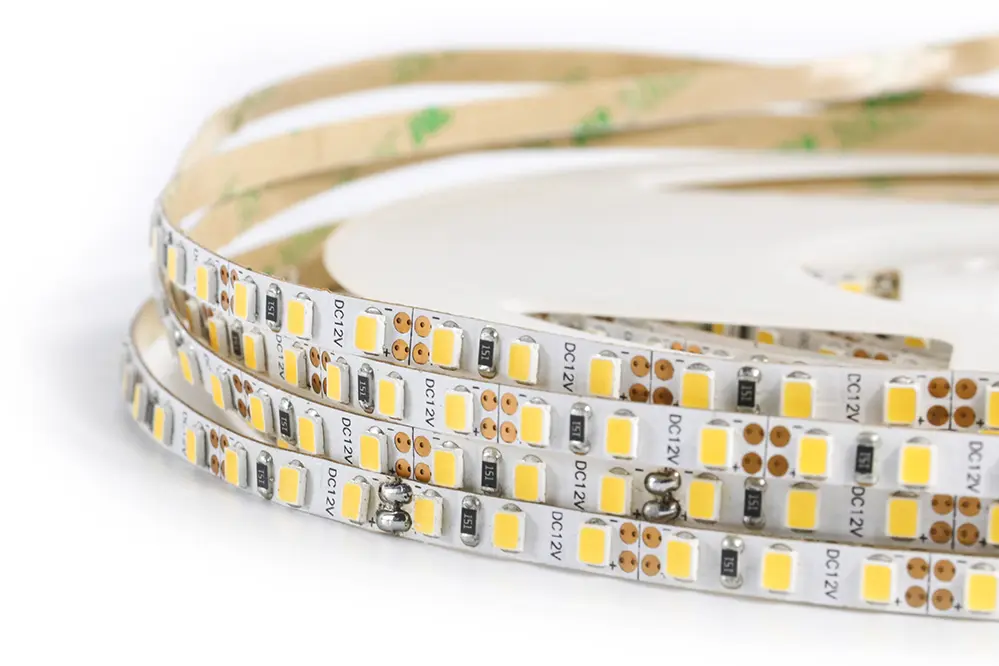
What is a 12V LED strip?
A 12V LED strip operates on a 12-volt power supply. This lower voltage is often used in smaller or simpler installations where the LED strip does not need to run long distances or power many LEDs.
Common applications for 12V LED strips
12V LED strips are highly versatile and can be used in various settings. Some common applications include:
• Under-cabinet lighting: Perfect for illuminating kitchen counters, providing both task and accent lighting.
• Accent lighting in living rooms: Enhances the ambiance by highlighting architectural features, shelves, or artwork.
• Automotive lighting: Used in cars, trucks, and motorcycles for both interior and exterior lighting.
• Small DIY projects: Ideal for hobbyists looking to add a creative touch to their projects.
Advantages of 12V LED strips
• Ease of use: Compatible with a wide range of power supplies and accessories.
• Availability: Widely available and often less expensive than 24V options.
• Flexibility: Suitable for smaller or less complex installations.
• Safety: Lower voltage means less risk of electric shock, making them safer for DIY projects and residential use.
Potential drawbacks of 12V LED strips
• Voltage drop: Over longer runs, 12V strips can suffer from significant voltage drop, reducing brightness at the end of the strip.
• Power consumption: Less efficient in larger installations compared to 24V strips.
• Limited length: Typically limited to shorter lengths without needing additional power supplies or boosters.
Basics of 24V LED Strips
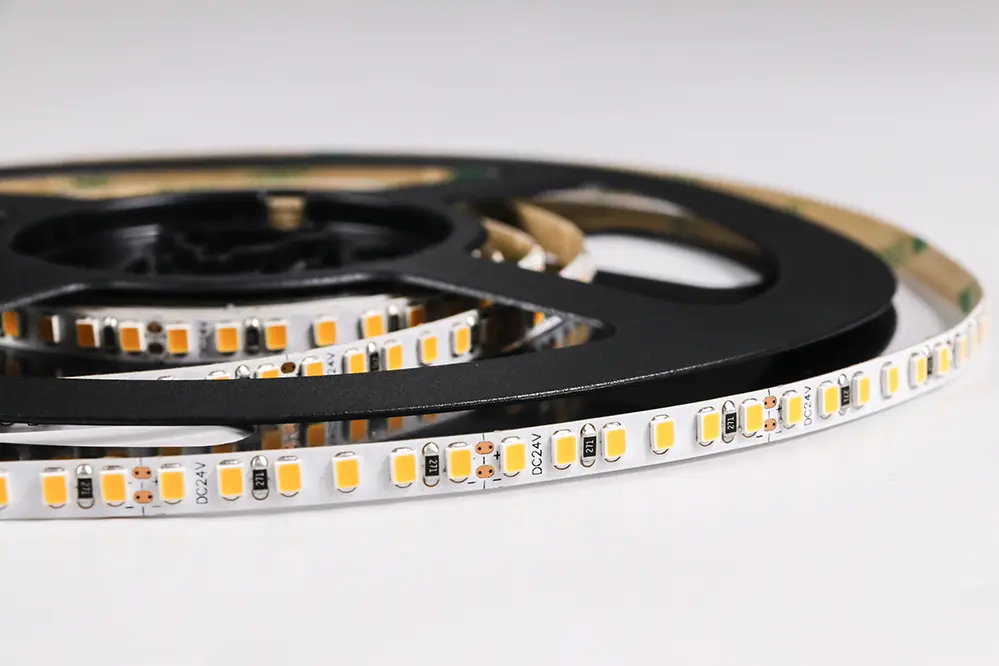
What is a 24V LED strip?
A 24V LED strip operates on a 24-volt power supply. This higher voltage allows for longer runs of LED strip without suffering from voltage drop, making them ideal for more extensive installations.
Common applications for 24V LED strips
24V LED strips are suited for more demanding projects, such as:
• Commercial lighting: Ideal for offices, retail spaces, and other commercial environments where longer runs of LED strips are needed.
• Large-scale home lighting projects: Great for extensive home lighting setups, including large rooms or entire houses.
• Outdoor lighting: Perfect for gardens, patios, and outdoor architectural lighting.
• Architectural lighting: Used in professional settings to highlight building features and create stunning visual effects.
Advantages of 24V LED strips
• Longer runs: Can power longer strips without significant voltage drop.
• Efficiency: More efficient for larger installations, reducing the need for multiple power supplies.
• Brightness: Often provides more consistent brightness over longer distances.
• Reduced heat: Generates less heat per unit of power consumed, improving longevity and performance.
Potential drawbacks of 24V LED strips
• Cost: Generally more expensive than 12V strips and may require specialized accessories.
• Compatibility: Not as widely compatible with all power supplies and controllers.
• Higher voltage: While still safe, the higher voltage requires more careful handling compared to 12V systems.
Key Differences Between 12V and 24V LED Strips
Voltage and current differences
12V LED strips use lower voltage and higher current, while 24V strips use higher voltage and lower current. This difference impacts how each strip can be used and installed. For example, higher current in 12V systems can lead to greater heat generation and energy loss over long distances.
Power consumption comparison
24V LED strips are often more efficient in larger installations. They draw less current for the same length of strip, which can translate to energy savings. For instance, a 10-meter run of 24V strip will be more efficient and experience less voltage drop than an equivalent 12V strip.
Brightness and efficiency
24V LED strips can maintain consistent brightness over longer distances. In contrast, 12V strips might dim towards the end of longer runs due to voltage drop. This makes 24V strips preferable for installations where uniform brightness is essential.
Heat management
Higher voltage systems (24V) tend to generate less heat per unit of power consumed compared to 12V systems. This improves thermal management and reduces the risk of overheating, enhancing the lifespan of the LEDs.
Installation Considerations
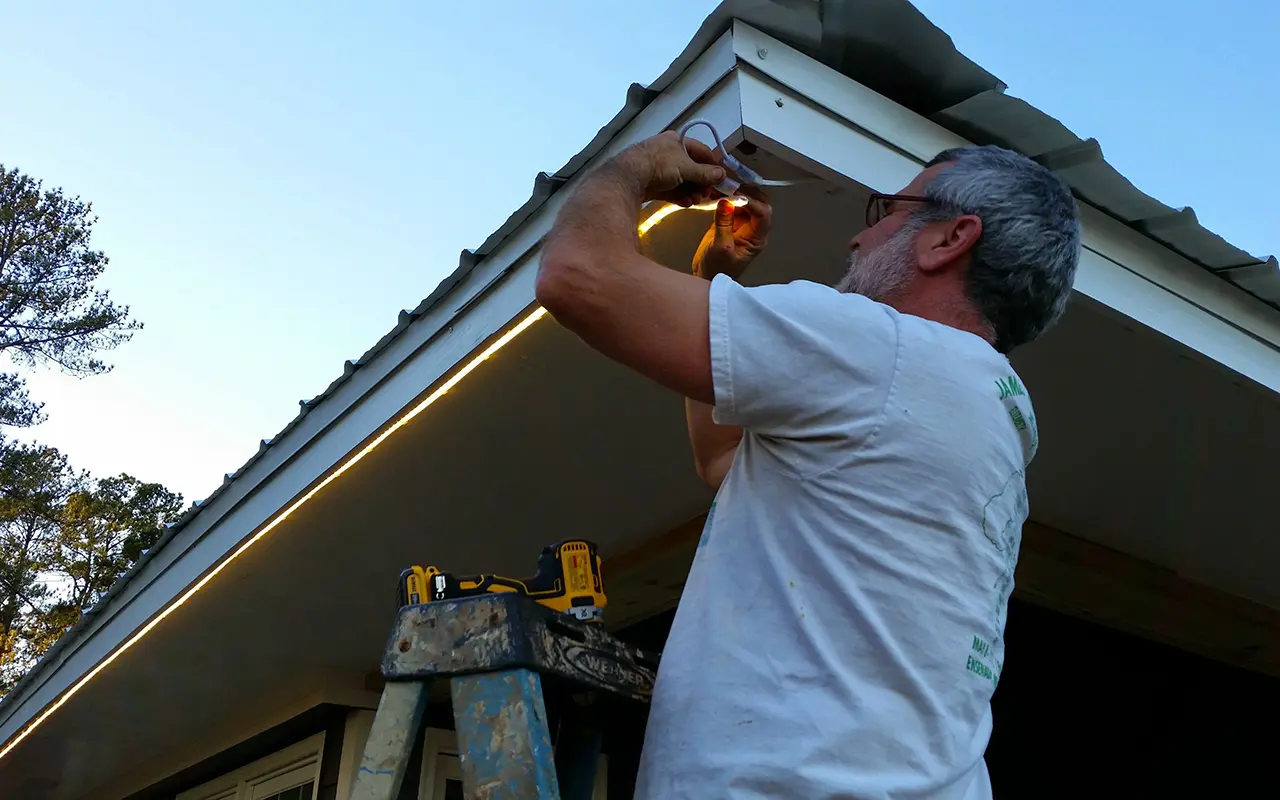
Ease of installation for 12V vs. 24V
12V LED strips are often easier to install for smaller projects due to their compatibility with a wide range of accessories. However, for larger installations, 24V strips reduce the complexity of managing multiple power supplies.
Required accessories
Both 12V and 24V LED strips require power supplies, connectors, and possibly controllers. However, the 24V systems might need fewer power supplies due to their ability to handle longer runs. When planning an installation, consider the total length of the strip and the power supply requirements.
Length limitations and voltage drop issues
12V LED strips are typically limited to shorter runs (up to 5 meters) before experiencing voltage drop. 24V strips can often run up to 10 meters or more without significant voltage drop. For projects requiring longer continuous runs, 24V strips are the better choice.
Cost Analysis
Price comparison between 12V and 24V LED strips
12V LED strips are generally cheaper upfront. However, for larger projects, the cost of additional power supplies and accessories for 12V systems can add up, making 24V strips more cost-effective in the long run.
Long-term cost efficiency
24V LED strips are more efficient for larger installations, potentially lowering long-term energy costs. Their ability to run longer distances without voltage drop reduces the need for additional components.
Maintenance and replacement costs
Both types of LED strips have similar maintenance requirements. However, 24V strips’ efficiency and longer run capabilities might reduce the frequency of replacements or adjustments. Regular maintenance includes checking connections, cleaning the strips, and ensuring power supplies are functioning correctly.
Use Cases and Best Applications
Ideal scenarios for using 12V LED strips

• Small DIY projects: Perfect for hobbyists and smaller home improvement projects.
• Automotive lighting: Commonly used in cars, trucks, and motorcycles for both interior and exterior lighting.
• Under-cabinet lighting: Ideal for kitchen counters, providing both task and accent lighting.
Ideal scenarios for using 24V LED strips

• Commercial or large-scale home lighting: Suitable for extensive home lighting setups, including large rooms or entire houses.
• Outdoor or architectural lighting: Perfect for gardens, patios, and outdoor architectural lighting.
• Installations requiring long runs of LED strips: Can power longer strips without significant voltage drop.
Choosing the right strip for your project
Consider the size and scope of your project. For smaller, less complex installations, 12V LED strips are usually sufficient. For larger projects requiring longer runs and higher efficiency, 24V LED strips are often the better choice.
FAQ
Are 24V LED strips brighter than 12V?
24V LED strips can be brighter, especially over longer distances. This is because they experience less voltage drop, maintaining consistent brightness throughout the strip. However, the actual brightness also depends on the number of LEDs per meter and the quality of the strip.
Can I use a 12V power supply for a 24V LED strip?
No, using a 12V power supply for a 24V LED strip will not work. The strip requires a 24V supply to function correctly. Using the wrong voltage can damage the LED strip. Always ensure that the power supply voltage matches the LED strip voltage.
What is the voltage drop and how does it affect LED strips?
Voltage drop refers to the reduction in voltage as electricity travels along the length of the strip. This can cause LEDs at the end of the strip to be dimmer. 24V LED strips experience less voltage drop compared to 12V strips. This is crucial for maintaining uniform brightness in longer runs.
How do I decide between 12V and 24V LED strips for my project?
Consider the size of your project, the distance you need the strip to run, and your budget. For smaller, simpler installations, 12V strips are often sufficient. For larger, more complex installations, 24V strips are usually the better choice. Think about the specific requirements of your project, including the desired brightness, length of the run, and any potential voltage drop issues. It’s also important to consider the long-term energy savings and maintenance costs.
How do I calculate the power requirements for my LED strip installation?
To calculate the power requirements, multiply the wattage per meter of the LED strip by the total length of the strip in meters. Add a safety margin of 20-30% to ensure the power supply is not operating at maximum capacity continuously.
Example: If you have a 12V LED strip with a power consumption of 5 watts per meter and you need 10 meters, the calculation is:
5 \text{ watts/meter} \times 10 \text{ meters} = 50 \text{ watts}
Adding a 20% safety margin:
50 \text{ watts} \times 1.2 = 60 \text{ watts}
Choose a power supply with at least 60 watts capacity.
Can I connect multiple LED strips to one power supply?
Yes, you can connect multiple LED strips to one power supply, provided the total wattage of the strips does not exceed the power supply’s capacity. Use connectors and splitters to distribute power evenly.
What type of adhesive is used on LED strips, and how can I improve adhesion?
Most LED strips come with a pre-applied adhesive backing, usually 3M tape. To improve adhesion, clean the surface thoroughly before application and use additional mounting clips or aluminum channels if necessary.
How do I control the brightness and color of my LED strips?
You can control the brightness and color of your LED strips using a controller. Controllers come in various forms, including remote controls, wall-mounted dimmers, and smartphone apps. Ensure the controller is compatible with your LED strip type (RGB, RGBW, etc.).
In-Depth Installation Guide
Planning Your Installation
Before starting your installation, it’s crucial to plan everything out. This includes measuring the area where you intend to install the LED strips, determining the length of the strips needed, and identifying the locations for power supplies and controllers.
1. Measure the Area: Measure the total length of the area where the LED strips will be installed. This will help you determine how many meters of LED strip you need.
2. Choose the Right Voltage: Decide between 12V and 24V LED strips based on your project’s size and complexity. For runs longer than 5 meters, 24V strips are generally more suitable.
3. Select Power Supplies: Ensure you have adequate power supplies that match the voltage of your LED strips. For 24V strips, you may need fewer power supplies due to their ability to handle longer runs.
Installing the LED Strips
Installing LED strips involves a few basic steps, regardless of whether you’re using 12V or 24V strips. Here’s a step-by-step guide:
1. Prepare the Surface: Clean the surface where the LED strips will be mounted. This ensures better adhesion.
2. Cut the Strips: LED strips can be cut to size at designated points, usually marked by a line or scissor icon. Make sure to cut only at these points to avoid damaging the strip.
3. Attach Connectors: If you need to connect multiple strips, use the appropriate connectors. For longer runs, use amplifiers or repeaters to maintain consistent brightness.
4. Mount the Strips: Peel off the adhesive backing and press the strip firmly onto the surface. For better adhesion, use mounting clips or channels.
5. Connect to Power Supply: Connect the LED strip to the power supply, ensuring the polarity matches (+ to +, – to -). Secure all connections to avoid loose wiring.
6. Test the Installation: Before finalizing, test the LED strips to ensure they are working correctly. Check for any dimming or flickering, which could indicate a voltage drop or poor connection.
Troubleshooting Common Issues
Even with careful planning, you might encounter some issues during installation. Here are common problems and their solutions:
1. Voltage Drop: If the end of the strip is dimmer than the beginning, you’re likely experiencing voltage drop. Solutions include using a thicker gauge wire, adding power supplies at intervals, or switching to 24V strips.
2. Overheating: If your LED strips are overheating, ensure they are not covered and have proper ventilation. Using aluminum channels can help dissipate heat.
3. Flickering Lights: Flickering can be caused by loose connections or an insufficient power supply. Double-check all connections and ensure your power supply can handle the load.
4. Adhesion Issues: If the strips are not sticking well, clean the surface thoroughly and use additional mounting clips or channels.
More About LED Strip Lighting Accessories
Power Supplies
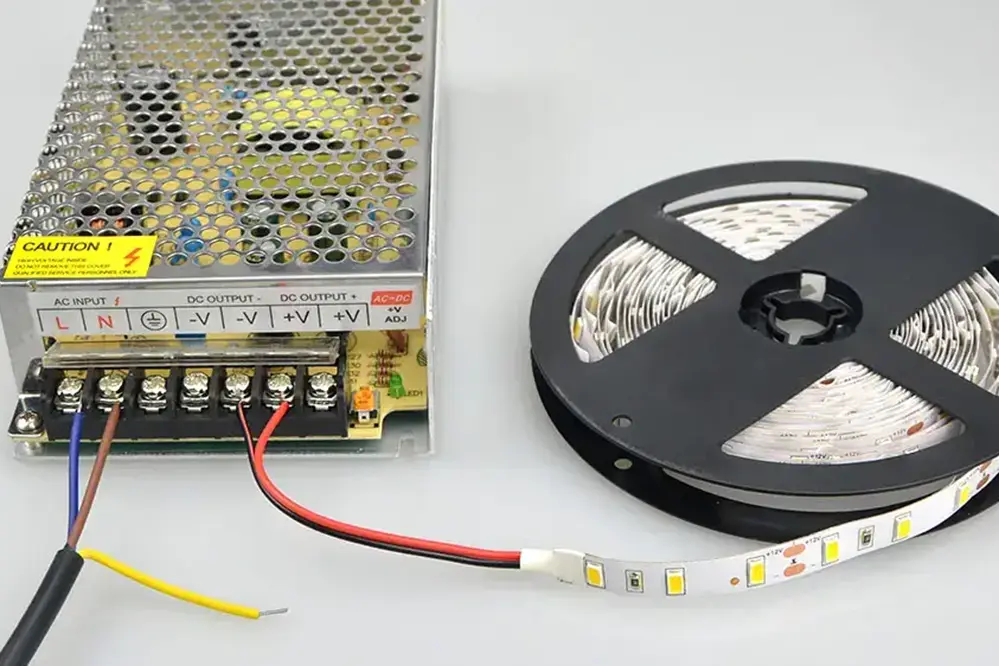
Power supplies are essential for converting your household AC voltage to the DC voltage required by your LED strips. When choosing a power supply, ensure it matches the voltage of your LED strip (12V or 24V) and provides sufficient wattage to power the entire length of the strip.
1. Constant Voltage Power Supplies: Most LED strips require a constant voltage power supply. Calculate the total wattage needed by multiplying the wattage per meter of the strip by the total length.
2. Dimmable Power Supplies: If you want to control the brightness of your LED strips, choose a dimmable power supply compatible with your LED strips and dimmer switches.
Connectors and Amplifiers
Connectors and amplifiers are used to join multiple LED strips and maintain consistent brightness across long runs.
1. Quick Connectors: These allow you to join strips without soldering. Ensure they match the width and type of your LED strip.
2. Amplifiers/Repeaters: These are used in long runs of LED strips to boost the signal and ensure consistent brightness. They are placed between sections of the strip to amplify the voltage.
Controllers
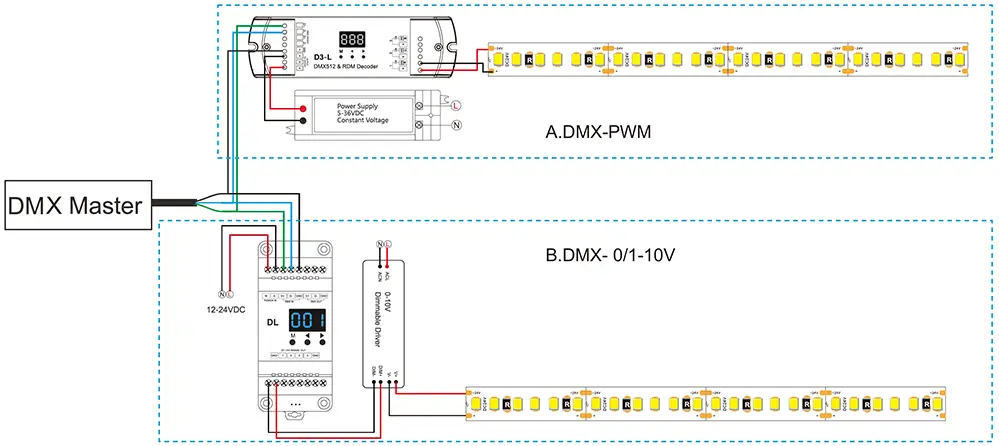
Controllers allow you to change the color, brightness, and patterns of your LED strips. There are several types of controllers available:
1. Infrared (IR) Controllers: These use a remote control and require a direct line of sight to operate.
2. Radio Frequency (RF) Controllers: These can operate through walls and from a longer distance.
3. Wi-Fi Controllers: These allow you to control your LED strips from your smartphone or other smart devices.
Conclusion
Choosing between 12V and 24V LED strips depends on the specific needs of your project. For smaller, simpler installations, 12V LED strips are often sufficient and more cost-effective. For larger, more complex installations requiring longer runs and higher efficiency, 24V LED strips are usually the better choice. By understanding the differences and planning your installation carefully, you can achieve the perfect lighting solution for your space.
If you’re looking for high-quality LED strip lights and LED neon strips, consider reaching out to Unitop. As a professional Chinese manufacturer, Unitop offers a wide range of LED lighting products that cater to various needs and applications. With their expertise and commitment to quality, you can be assured of getting the best products for your lighting projects. Contact Unitop today to explore their extensive selection and find the perfect LED strips for your next project.
